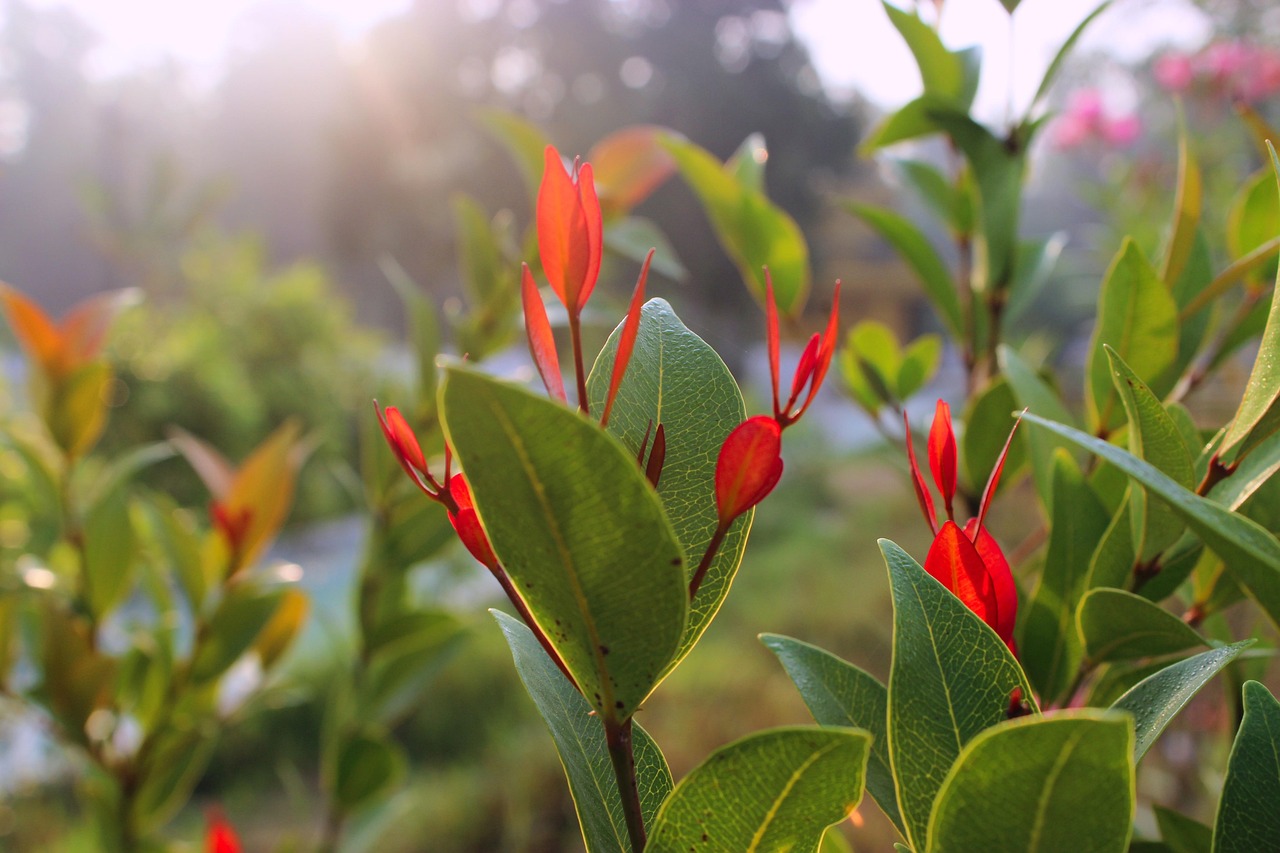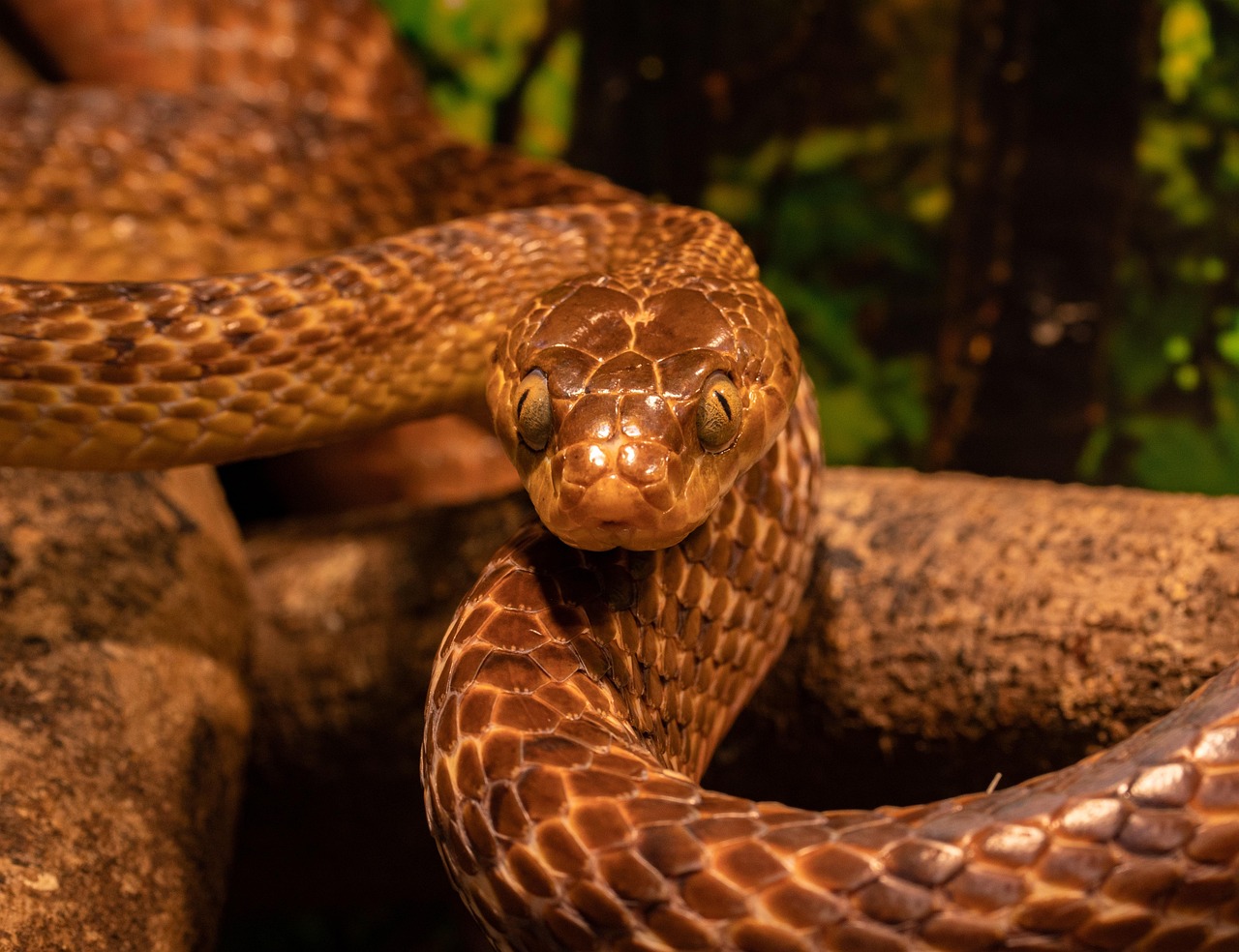The Eugenia tree, known for its rapid growth, can thrive indoors at a rate of about 12 to 24 inches per year. It is commonly used as a hedge due to its dense foliage and ability to be shaped easily.
The Eugenia tree, also referred to as Syzygium paniculatum, is a popular choice among indoor gardeners and landscapers. This evergreen tree is native to Australia and parts of Southeast Asia. With its glossy leaves and attractive form, it serves as an excellent ornamental plant. Many people appreciate its versatility, as it can be grown indoors in pots or used outdoors as a hedge or privacy screen.

One of the key features of the Eugenia tree is its growth rate. When provided with optimal conditions, this tree can grow quickly and produce lush foliage. Understanding how to cultivate it indoors and utilize it as a hedge can enhance any garden or indoor space.
Growth Rate of Eugenia Trees Indoors
The growth rate of the Eugenia tree indoors can vary based on several factors. These include light conditions, watering practices, soil type, and temperature. In general, a well-cared-for Eugenia tree can grow between 12 to 24 inches per year. This rapid growth makes it an appealing option for those looking to fill space quickly.
When growing indoors, it is essential to provide adequate light. Eugenia trees thrive in bright, indirect sunlight. If placed in a dim area, their growth may slow down significantly. It is advisable to rotate the plant periodically to ensure all sides receive equal light exposure.

Watering is another critical aspect of maintaining healthy growth. Eugenia trees prefer well-draining soil that remains slightly moist but not soggy. Overwatering can lead to root rot, while underwatering can cause leaf drop. A consistent watering schedule will help achieve the best growth results.
Temperature also plays a significant role in the growth rate of Eugenia trees. They prefer temperatures between 60°F and 75°F. If the indoor environment is too cold or hot, the tree may become stressed, affecting its growth. Maintaining a stable temperature will help promote healthy development.
| Factor | Ideal Condition |
|---|---|
| Light | Bright, indirect sunlight |
| Watering | Consistently moist, well-draining soil |
| Temperature | 60°F to 75°F |
In addition to its growth rate indoors, the Eugenia tree is frequently used as a hedge in outdoor landscapes. Its dense foliage provides excellent privacy and wind protection. The tree can be easily trimmed into various shapes and sizes, making it ideal for formal hedges or natural screens.

Homeowners often choose Eugenia trees for hedging due to their ability to tolerate pruning well. This quality allows gardeners to maintain a neat appearance while promoting bushier growth. Regular trimming encourages the plant to branch out, resulting in a fuller hedge.
When planted outdoors, Eugenia trees can reach heights of up to 15 feet or more. However, when kept trimmed as a hedge, they can be maintained at much lower heights. The versatility of this tree makes it suitable for various landscape designs, from modern gardens to traditional settings.
In conclusion, understanding the growth rate of Eugenia trees indoors and their applications as hedges can enhance your gardening experience. By providing the right conditions and care, gardeners can enjoy the beauty and functionality of this remarkable plant.

Optimal Conditions for Growing Eugenia Trees Indoors
To successfully grow Eugenia trees indoors, it is essential to create an environment that mimics their natural habitat. This includes factors such as light, humidity, temperature, and soil type. Each of these elements plays a vital role in the health and growth rate of the tree.
Light Requirements
As mentioned earlier, Eugenia trees thrive in bright, indirect sunlight. Insufficient light can lead to leggy growth and poor foliage development. Here are some tips for ensuring your Eugenia tree receives the right amount of light:
- Placement: Position your tree near a south or west-facing window to maximize light exposure.
- Supplemental Lighting: During winter months, consider using grow lights to supplement natural light.
- Rotation: Rotate the tree every few weeks to ensure even light distribution on all sides.
Humidity Levels
Eugenia trees also prefer higher humidity levels. Dry indoor air can lead to leaf drop and other stress-related issues. To maintain adequate humidity, consider the following:
- Misting: Lightly mist the leaves regularly to increase humidity around the plant.
- Humidity Tray: Place a tray filled with pebbles and water under the pot to create a microclimate.
- Humidifier: Use a humidifier in the room to maintain optimal humidity levels, especially during winter.
Soil and Fertilization
The right soil mix is crucial for healthy growth. Eugenia trees prefer well-draining soil that retains moisture without becoming soggy. Here are some tips for soil selection and fertilization:
- Soil Mix: A mixture of potting soil, peat moss, and perlite works well for Eugenia trees.
- Fertilization: During the growing season (spring and summer), apply a balanced, water-soluble fertilizer every 4-6 weeks.
- Repotting: Repot the tree every couple of years to refresh the soil and promote healthy root growth.
Pest and Disease Management
Eugenia trees can be susceptible to various pests and diseases. Being proactive in managing these issues will help keep your plant healthy and vibrant.
Common Pests
Some pests that may affect Eugenia trees include:
- Spider Mites: These tiny pests can cause leaf discoloration and webbing. Regularly misting the leaves can help prevent infestations.
- Aphids: These insects suck sap from the leaves, leading to stunted growth. Remove them with a strong stream of water or insecticidal soap.
- Scale Insects: These pests appear as small bumps on stems and leaves. They can be treated with neem oil or by wiping them off manually.
Disease Prevention
Diseases that may affect Eugenia trees include fungal infections and root rot. Here are some preventative measures:
- Avoid Overwatering: Ensure proper drainage to prevent waterlogged soil.
- Good Air Circulation: Space plants appropriately to allow for air circulation, reducing humidity around the foliage.
- Inspect Regularly: Check for signs of disease or pests frequently to catch problems early.
Pruning and Shaping Eugenia Trees
Pruning is essential for maintaining the desired shape and size of your Eugenia tree. Proper pruning encourages bushier growth and helps manage the tree’s height when used as a hedge.
When to Prune
The best time to prune Eugenia trees is during their active growing season, which is typically in spring and early summer. Avoid heavy pruning in fall or winter, as this can stress the plant.
How to Prune
Follow these steps for effective pruning:
- Use Clean Tools: Always use sharp, clean pruning shears to prevent infection.
- Remove Dead or Diseased Wood: Start by cutting away any dead or diseased branches at their base.
- Shape the Tree: Trim back new growth to maintain the desired shape. Aim to create an even canopy.
- Encourage Fullness: Cut back longer branches to promote more bushy growth over time.
By following these guidelines for optimal conditions, pest management, and pruning techniques, you can ensure your Eugenia tree thrives indoors while also serving as an effective hedge outdoors.
Common Uses of Eugenia Trees
The Eugenia tree is not only valued for its aesthetic appeal but also for its practical uses in landscaping and gardening. This versatile plant can serve various purposes, making it a favorite among gardeners and landscapers alike.
As an Indoor Plant
When grown indoors, Eugenia trees provide several benefits:
- Air Purification: Eugenia trees can help improve indoor air quality by filtering pollutants and producing oxygen.
- Aesthetic Appeal: The glossy leaves and attractive form make them a beautiful addition to any room.
- Stress Relief: Being around plants has been shown to reduce stress and promote relaxation.
As a houseplant, Eugenia trees can create a calming atmosphere in living rooms, offices, or any indoor space where they are placed.
Using Eugenia Trees as Hedges
Eugenia trees are particularly popular for use as hedges due to their dense foliage and easy maintenance. Here are some of the reasons why they are chosen for this purpose:
- Privacy: Their thick growth creates an effective barrier against prying eyes, making them ideal for creating private outdoor spaces.
- Windbreaks: Eugenia hedges can protect gardens and patios from strong winds, providing a more comfortable environment.
- Sound Barrier: Dense hedges can help reduce noise pollution from nearby roads or neighbors.
Planting Eugenia Trees Outdoors
When planting Eugenia trees outdoors, proper site selection and preparation are crucial for successful growth. Here are some essential steps to follow:
Choosing the Right Location
Select a location that meets the light and space requirements of the Eugenia tree. Consider the following:
- Sunlight: Choose a spot that receives full sun to partial shade. Ideally, they should get at least six hours of sunlight daily.
- Space: Ensure there is enough space for the tree to grow. If planting as a hedge, consider the desired height and width.
Soil Preparation
The soil should be well-draining and rich in organic matter. Here are steps to prepare the soil:
- Test Soil pH: Aim for a pH between 6.0 and 7.0 for optimal growth.
- Add Organic Matter: Incorporate compost or well-rotted manure into the planting area to improve soil fertility.
- Tilling: Loosen the soil to a depth of at least 12 inches to promote healthy root development.
Planting Process
Once you have selected the right location and prepared the soil, follow these steps to plant your Eugenia tree:
- Dig a Hole: Dig a hole twice as wide and just as deep as the root ball of the plant.
- Place the Tree: Position the tree in the center of the hole, ensuring the top of the root ball is level with the ground.
- Backfill: Fill the hole with soil, gently tamping it down to eliminate air pockets.
- Water Thoroughly: Water the newly planted tree deeply to help establish its roots.
Caring for Outdoor Eugenia Trees
Caring for Eugenia trees once they are planted outdoors involves ongoing maintenance practices to promote healthy growth.
Watering
Eugenia trees require regular watering, especially during dry spells. Here are some guidelines:
- Deep Watering: Water deeply once a week, allowing the soil to dry slightly between waterings.
- Avoid Overwatering: Ensure that water does not pool around the base of the tree, as this can lead to root rot.
Mulching
Applying mulch around the base of the tree helps retain moisture and suppress weeds. Here’s how to mulch effectively:
- Material Selection: Use organic materials like wood chips or shredded bark.
- Layer Thickness: Apply a layer of mulch about 2-4 inches thick, keeping it away from the trunk to prevent rot.
Pest Management Outdoors
Pest management is crucial for maintaining healthy outdoor Eugenia trees. Regular inspections will help identify problems early. Consider these methods:
- Natural Predators: Encourage beneficial insects like ladybugs that feed on aphids.
- Pest Control Products: Use organic insecticides when necessary to manage severe infestations.
By understanding how to care for Eugenia trees both indoors and outdoors, gardeners can ensure these versatile plants thrive in any environment.
Potential Benefits of Eugenia Trees
The Eugenia tree offers numerous benefits beyond its aesthetic appeal and practical uses. Understanding these advantages can further enhance your decision to incorporate this plant into your home or garden.
Environmental Benefits
Eugenia trees contribute positively to the environment in several ways:
- Carbon Sequestration: Like all trees, Eugenia absorbs carbon dioxide from the atmosphere, helping to mitigate climate change.
- Habitat for Wildlife: The dense foliage provides shelter for various birds and insects, supporting local ecosystems.
- Soil Erosion Prevention: The root system of Eugenia trees helps stabilize soil, reducing erosion on slopes and in gardens.
Health Benefits
Incorporating Eugenia trees into your indoor environment can yield health benefits as well:
- Improved Air Quality: As effective air purifiers, these trees can help remove toxins from the air.
- Mood Enhancement: Studies show that having plants indoors can improve mood and reduce stress levels, contributing to overall mental well-being.
- Enhanced Focus: Indoor plants, such as the Eugenia tree, can improve concentration and productivity by creating a more pleasant work environment.
Aesthetic Versatility
The Eugenia tree’s versatility allows it to fit into various design styles:
- Formal Landscapes: Its ability to be shaped makes it perfect for structured gardens and formal hedges.
- Natural Gardens: When left to grow naturally, it complements informal garden designs beautifully.
- Indoor Decor: As a houseplant, it adds a touch of greenery to any room, enhancing the overall decor.
Challenges of Growing Eugenia Trees
While Eugenia trees offer many benefits, potential challenges should be considered before planting. Here are some common issues and how to address them:
Common Challenges
- Pest Infestations: As previously mentioned, pests like aphids and spider mites can be problematic. Regular monitoring and prompt action are essential for control.
- Environmental Sensitivity: Eugenia trees may react poorly to sudden temperature changes or drafts. They should be placed in stable environments away from heating vents or air conditioning units.
- Slow Establishment: Newly planted Eugenia trees may take time to establish their root systems. Patience is key during this phase.
Maintenance Commitment
Eugenia trees require regular maintenance, including watering, pruning, and pest control. Being committed to their care is essential for long-term success. Here are some tips to help manage maintenance effectively:
- Create a Care Schedule: Set reminders for watering, fertilizing, and inspecting for pests to maintain consistent care.
- Stay Informed: Research best practices for Eugenia care and keep up with any new findings or techniques in horticulture.
- Join Gardening Communities: Engaging with local gardening groups or online forums can provide support and helpful advice from experienced growers.
Conclusion
The Eugenia tree is a remarkable plant that combines beauty, functionality, and environmental benefits. Its rapid growth rate indoors makes it an attractive option for home gardening enthusiasts. Additionally, its use as a hedge enhances outdoor spaces by providing privacy and wind protection while contributing to local ecosystems.
Caring for Eugenia trees requires a commitment to understanding their needs regarding light, water, humidity, and pest management. With proper care and attention, these versatile trees can thrive in various settings—indoors or outdoors—offering both aesthetic appeal and practical advantages. Whether you are looking to create a tranquil indoor space or a lush outdoor hedge, the Eugenia tree is an excellent choice that can enhance your living environment while contributing positively to the ecosystem.
Overall, incorporating Eugenia trees into your life can lead to numerous benefits, making them a worthwhile investment for any gardener or homeowner.
